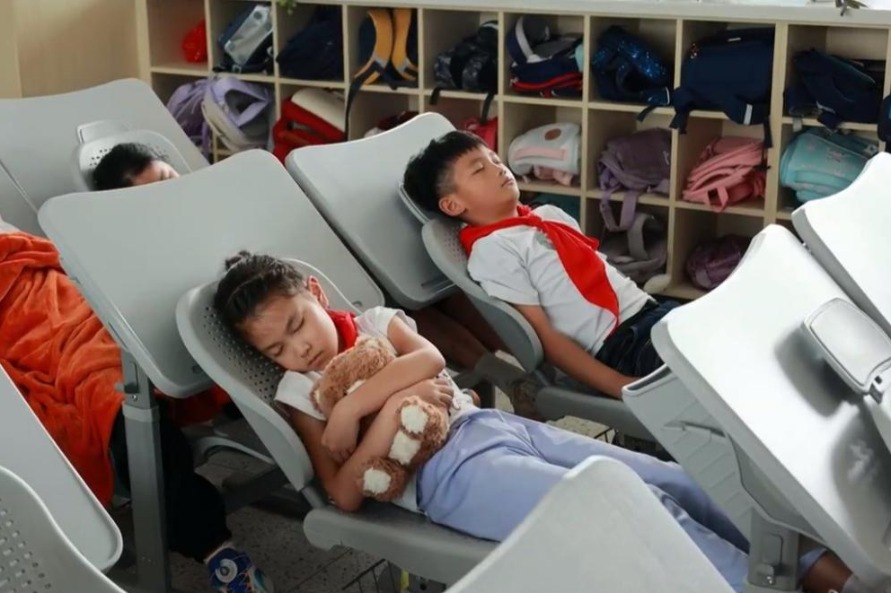K visa launched to attract STEM talent
Skilled professionals will be able to enter China more flexibly


China's newly introduced K visa, designed for young professionals specializing in science and technology, has been praised by industry experts, think tanks and researchers as a timely step in attracting international STEM talent, enhancing exchanges and injecting fresh momentum into innovation.
On Aug 14, China introduced the K visa, marking a new addition to China's visa categories for foreigners. The visa will come into effect on Oct 1.
Shortly after the new visa type was unveiled, officials from the Ministry of Justice, Ministry of Foreign Affairs, Ministry of Public Security, and National Immigration Administration addressed questions regarding the decision, clarifying the eligibility criteria for the visa.
They said the K visa will be issued to foreign science and technology professionals who hold a bachelor's degree or higher in science, technology, engineering or mathematics from recognized universities or research institutions, or engage in related research or education at such institutions.
Compared with the existing 12 visa types, the K visa offers holders greater convenience in entry frequency, validity period and duration of stay, according to the officials. Holders may engage in exchanges in fields such as education, culture, and science and technology, as well as relevant entrepreneurial and business activities in China, they said.
Eligibility for the K visa is based on the applicants' age, educational background and work experience, without requiring them to have an employer or inviting organization within China, the officials added.
This visa revision, which aligns with China's emphasis on fostering a more proactive, open and effective talent policy, is part of a broader initiative to build an internationally competitive talent system that attracts and retains skilled professionals from across the world.
Accounting firm KPMG said in a recent report that the addition of the K visa "highlights China's emphasis on attracting the next generation of scientists and researchers. The K visa will enable holders to arrange their activities in China more flexibly, effectively promoting diverse scientific and technological cultural exchanges."
The K visa "opens up a new pathway for entry into China for work purposes", the report said.
Miao Lu, secretary-general of the Center for China and Globalization, a Beijing-based think tank, told China Daily she believes the K visa will significantly facilitate international STEM talent exchanges and attract more young professionals to China.
Noting that talent interactions play out on a global stage, Miao said, "China's commitment to high-standard opening-up and its overall high-quality development have transformed the country into a 'development highland', which has, in turn, made it a magnet for global talent, creating a 'talent highland'."
Miao said the K visa will reduce barriers to talent exchange and facilitate global talent mobility.
China's introduction of the K visa coincides with heightened global competition for skilled professionals. However, Miao pointed out that "in contrast to rising anti-globalization trends and tightened visa restrictions elsewhere, China is optimizing its visa policies and opening its doors wider for talent".
The K visa also represents a policy shift that China is leaning toward sourcing talent globally rather than solely from its 1.4 billion population, reflecting expanded capacity and vision, she said.
Miao stressed that translating such talent dividends into development momentum will help "Chinese enterprises expand globally, cultivate domestic talent, foster joint educational collaborations and spur innovation".
Dambaru Ballab Kattel, an associate professor at the Chinese Academy of Sciences' Institute of Tibetan Plateau Research, said China is rapidly emerging as a global hub for education and research. "Thousands of talented individuals have already benefited as students, researchers and experts from the opportunities provided by China," he said.
Kattel, from Nepal, obtained his PhD from the University of Chinese Academy of Sciences as the first international student at the Institute of Tibetan Plateau Research. After graduating from the University of CAS, he was a post-doctoral student in Germany before becoming a university faculty member in Pakistan.
In 2016, with support from the CAS President's International Fellowship Initiative, he returned to the Institute of Tibetan Plateau Research.
This talent funding initiative, which has welcomed many global scientists in recent years, "has significantly advanced my academic career", Kattel said, adding he believes that "expanding such platforms to attract foreign talent will further strengthen China's innovation capacity and international cooperation across various fields".
"With world-class universities, abundant funding, advanced research facilities and expert mentorship, China offers a strong environment for academic and professional growth," he said.
With a focus on mountain climate systems as well as climate change adaptation for local communities in the Hindu Kush Himalaya region and Qinghai-Tibet Plateau, Kattel leads international projects like the Third Pole Environment program, advancing research collaboration in that area.
Kattel praised the newly introduced K visa, saying "it is a significant step in attracting more young international talent to gain knowledge, as well to contribute to China's scientific and technological progress".
"It reflects China's commitment to engaging in the next generation in global innovation," he said.
Expanded access
In addition to supporting the optimization of visa policies to promote technology, education and talent exchanges, Miao advocated for greater facilitation in tourism, saying that compared with other forms of exchanges, tourism is particularly crucial, as it opens a window for overseas visitors to see the real China.
China has increasingly expanded and optimized its visa waiver program in recent years to facilitate foreign entries, including visa-free transits, as well as unilateral and mutual exemptions.
Wang Zhizhong, vice-minister of public security and head of the National Immigration Administration, told a news conference on July 30 that during the 14th Five-Year Plan (2021-25) period, China granted unilateral or mutual exemptions to 75 countries and expanded visa-free transit to 55 countries. He said that during this period, the number of entry ports for visa-free transit increased to 60 and the duration of stay for visa-free transit extended to 240 hours.
Kim Hurup, a Danish national and factory manager for a Swedish company that does business in China, said he had made five business trips to China this year, all to Kunshan in Jiangsu province. He added his appreciation for China's unilateral visa-free policy for Denmark, describing it as a long-anticipated move.
Hurup said it provides greater convenience and has made his trips smoother.
Data from the National Immigration Administration showed that 13.64 million foreign entries were made visa-free in the first half of this year, marking a 53.9 percent increase from the year prior.





































